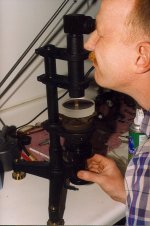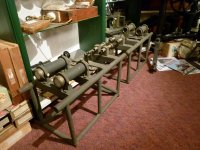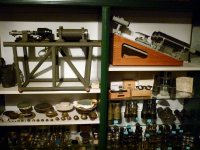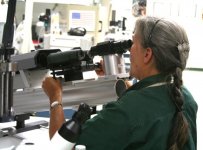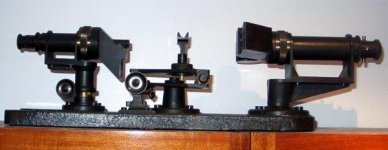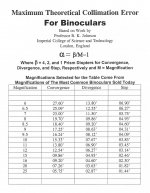Bill,
You may have noted it in the past, and I apologize if I'm re-hashing, but what binoculars do you have, what do you like [favourites] and do you have opinions / experience on the current alpha's?
Thanks.
Hi James:
Well, you have sinned. I don’t think I need answer someone who has . . . “rehashed.”
Oh, my friend how many times have I chosen to cover the same subject trying to help the helpable, and frustrate the rest. Look at all the words expended trying to get people to understand there are NO American commercial binocular manufacturers in the States. It was not the first time I have gone to such lengths, nor will it be the last—on the same subject. The people who believe everything they read in a magazine, magazine ad, or on the side of a box, will keep the issue going as long as the Internet lasts. Thinking has never been my strong suit.
I have about 30 binos—Zeiss, Canon, Minolta, Swift, and many I can’t remember. I didn’t set out to be a nutcase; it just happened. Most came by way of doing optical work for folks. The best I have ever looked through was the 8x Swarovski EL. But, that was just one of a tier of quality. I was willing to SPEND the money for my 8x32 Nikon SE. I have owned their Prostar, which I used for astronomy. I had two. The first was pawned and lost by my pharmaceutically-inclined son. And, I can’t find the other.
I have used the Swift Audubon 8.5x44 and its big brother the Audubon (later Kestrel)10x50—take your hat off, Ed. When travelling, I used to use Swift UltraLite (same as the Celestron Ultima), which ARE NOT the same as the instruments that carry that name today.
I’m probably not a good person to ask about current “Alphas,” because I don’t get wrapped around the axle like some folks on BF. I have good binoculars; I use them when I can; I’m happy to leave the armchair speculations to armchair speculators. I try to muddy the water from time to time with a splash of reality. But, for myself, I don’t give a rat’s butt. I think I started this thread on an eye-opening point. That is: people will expend thousands of words talking about myriad things they can’t do a bloody thing about, while ignoring the one thing they can. To me, that says a lot.
And too, the depth of possible problems just keeps getting deeper. Above, Henry talked about the aberrations that could be created by the objective and eyepiece not being centered. But, does the story end there? It does not. The attached photo is of a fellow using my lens centering machine to make sure the lenses were centered as good as possible before being re-cemented. And what about the elements of the EP? Humm! Ah, but you’re making me remember things I did at Captain’s that were head and shoulders above what most of the big boys even had the capacity to do. I felt my customers were worth it.
I know it’s been more than you ever wanted to know. But then, I was never a “sound bite” journalist.
Cheers,
Bill




